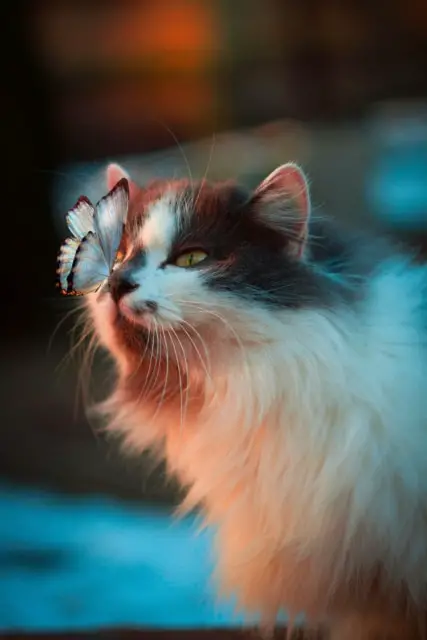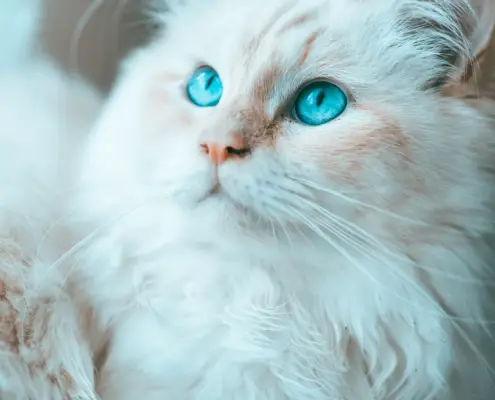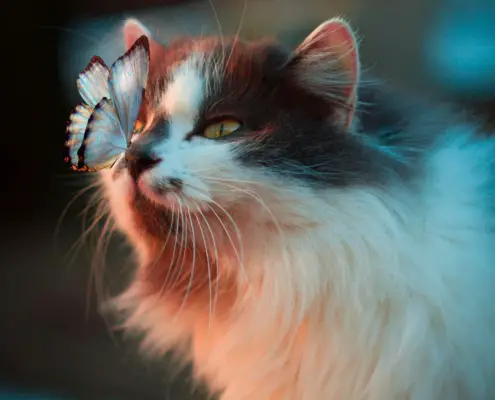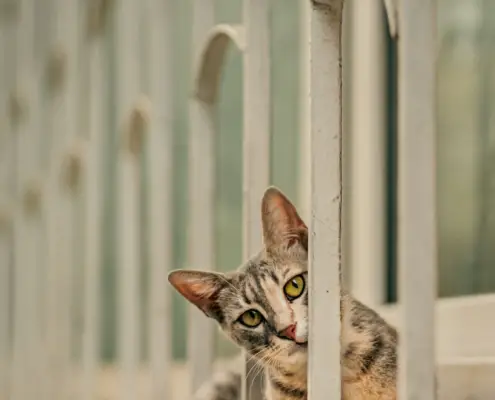
The Lambkin cat breed is known for its distinct and adorable appearance, capturing the hearts of cat lovers worldwide. With their tiny stature and beautiful coats, Lambkins have become a sought-after breed in recent years. This comprehensive guide will delve into the history, physical characteristics, personality traits, health considerations, grooming needs, feeding requirements, training and socialization tips, as well as how to find a reputable Lambkin cat breeder. Whether you’re considering adding a Lambkin to your family or simply curious about this charming breed, this guide will provide all the information you need.
History and origin of the Lambkin cat breed
The Lambkin cat breed is a relatively new breed that originated from a crossbreeding experiment between a Munchkin and a Selkirk Rex cat. The Munchkin breed is known for its short legs, while the Selkirk Rex breed has a curly coat. The goal of this crossbreeding was to create a cat with both short legs and a curly coat. The first Lambkin was born in 1995, and since then, the breed has gained recognition and popularity.
Physical characteristics of the Lambkin cat breed
Lambkins are small cats with short legs, which are the result of the Munchkin gene. Their bodies are compact and muscular, giving them a sturdy appearance. One of the most distinctive features of Lambkins is their curly or wavy coat, inherited from the Selkirk Rex breed. Their coats can come in a variety of colors and patterns, ranging from solid colors to tabbies, tortoiseshells, and points. Despite their small size, Lambkins are surprisingly heavy due to their muscular build.
The head of a Lambkin is round, with large, expressive eyes that can be any color. Their ears are medium-sized and can have tufts of hair at the tips. Lambkins have a sweet and endearing expression, which adds to their overall charm. Their short legs do not hinder their ability to jump or play, and they are known for their agility and athleticism.
Personality traits of the Lambkin cat breed
Lambkins are known for their friendly and affectionate nature. They are social cats that enjoy being around their human companions and other pets. They are often described as being playful, curious, and intelligent. Lambkins love to explore their surroundings and are known to get into mischief from time to time. They are also known for their gentle and patient demeanor, making them great companions for families with children or other pets.
Despite their small size, Lambkins have a big personality and are not afraid to demand attention. They enjoy being the center of attention and love to be cuddled and petted. Lambkins are known to be lap cats and will often curl up on their owner’s lap for a nap. They are also known for their vocal nature and will communicate with their owners through soft chirps and trills.
Health considerations for Lambkin cats
Lambkins are generally healthy cats, but like any other breed, they may be prone to certain health issues. One potential concern is hypertrophic cardiomyopathy (HCM), a genetic heart disease that can affect cats of any breed. It is important to choose a reputable breeder who screens their cats for this condition to minimize the risk.
Another health consideration for Lambkins is their short legs. While the Munchkin gene responsible for their short legs is not associated with any health problems, it is essential to provide them with proper care and ensure they do not become overweight. Obesity can put additional strain on their joints and lead to mobility issues.
Regular veterinary check-ups, a balanced diet, and regular exercise are essential for maintaining the overall health and well-being of Lambkins.
Grooming needs of the Lambkin cat breed
The Lambkin’s curly or wavy coat requires regular grooming to keep it looking its best. Brushing the coat at least once a week helps prevent matting and removes loose hair. A stainless steel comb or a wide-toothed comb is ideal for combing through the curls. Some Lambkins may require more frequent grooming, especially during shedding seasons.
Bathing a Lambkin should be done as needed, using a cat-specific shampoo that is gentle on the skin and coat. It is important to dry the coat thoroughly after bathing to prevent any skin issues. Paying attention to the ears and keeping them clean is also important, as Lambkins may be prone to wax buildup due to their curled ears.
Feeding requirements for Lambkin cats
Lambkins, like all cats, require a balanced diet to maintain their health. High-quality commercial cat food that is specifically formulated for their age and activity level is recommended. It is important to provide them with a diet that meets their nutritional needs and does not contribute to obesity.
Feeding Lambkins should be done in controlled portions, based on their weight and activity level. Overfeeding can lead to weight gain and potential health issues. Fresh water should always be available to keep them hydrated.
Training and socialization tips for Lambkin cats
Lambkins are intelligent cats that can be trained to perform tricks and respond to commands. Positive reinforcement techniques, such as rewards and treats, work best when training a Lambkin. They are eager to please and enjoy the mental stimulation that training provides.
Socialization is also important for Lambkins to ensure they grow up to be well-adjusted and friendly cats. Exposing them to various environments, people, and animals from a young age helps them develop social skills and reduces the likelihood of them becoming timid or fearful. Gradual introductions to new experiences and positive reinforcement can help in the socialization process.
Finding a reputable Lambkin cat breeder
When looking for a Lambkin cat breeder, it is crucial to find a reputable and responsible breeder who prioritizes the health and well-being of their cats. A reputable breeder will conduct appropriate health screenings, provide proper care for their cats, and be knowledgeable about the breed. They should also be willing to answer any questions you may have and provide you with necessary documentation, such as health records and pedigree certificates.
Researching and visiting multiple breeders, asking for recommendations, and checking online reviews can help you find a reputable Lambkin cat breeder in your area.
Frequently asked questions about the Lambkin cat breed
Q: Are Lambkins suitable for families with children?
A: Yes, Lambkins are generally great companions for families with children. They have a gentle and patient nature, making them suitable for households with kids. However, it is always important to supervise interactions between children and cats to ensure the safety and well-being of both.
Q: Do Lambkins require a lot of exercise?
A: While Lambkins are active and playful cats, they do not require excessive exercise. Regular playtime, interactive toys, and access to scratching posts and climbing structures are sufficient to keep them mentally and physically stimulated.
Q: How long do Lambkins live?
A: On average, Lambkins have a lifespan of 12 to 15 years. With proper care and a healthy lifestyle, they can live even longer.
Conclusion
The Lambkin cat breed is undeniably charming, both in appearance and personality. Their unique combination of short legs and curly coats sets them apart from other breeds, capturing the hearts of cat lovers around the world. From their playful and affectionate nature to their manageable grooming needs, Lambkins make delightful companions for individuals and families alike. By understanding their history, physical characteristics, personality traits, health considerations, grooming needs, feeding requirements, training and socialization tips, and how to find a reputable breeder, you can make an informed decision when considering adding a Lambkin to your family. The adorable charm of the Lambkin cat breed is sure to bring joy and companionship to any household.
If you enjoyed my article, I would appreciate you sharing it with your network.

Sima Ndlebe
Sima writes for CatBuzz. He is interested in Cats, Health and Fitness, and Entrepreneurship.
Published: 10 October 2023



